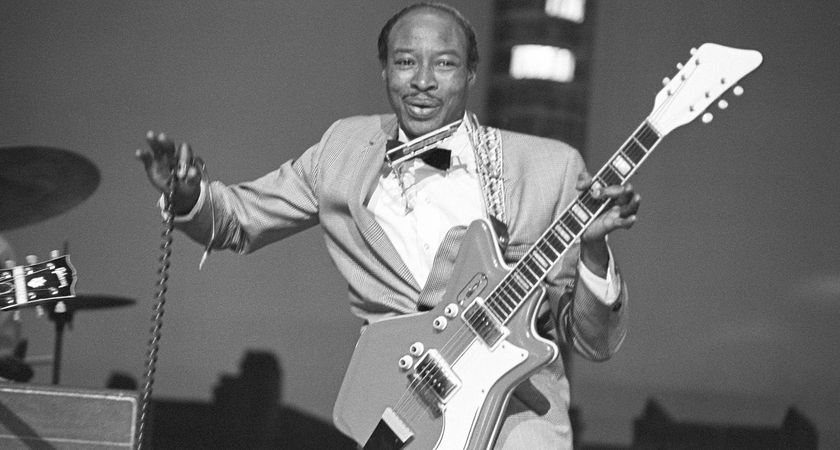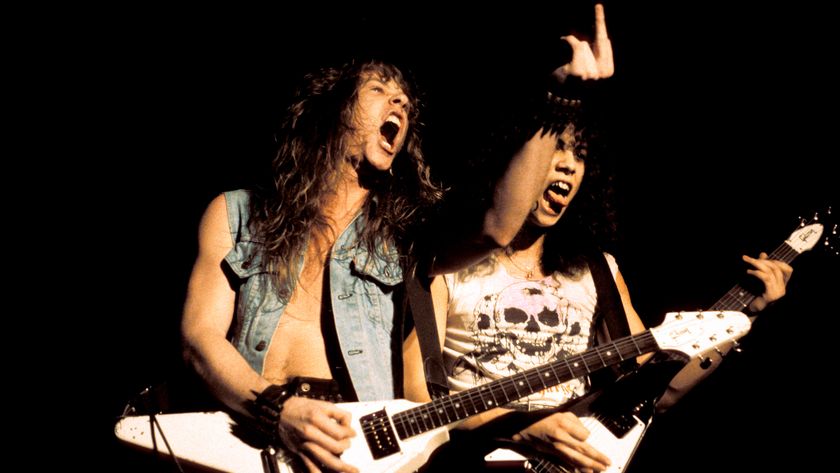How to play guitar like Pearl Jam
Discover the lead licks and arrangement secrets of Stone Gossard and Mike McCready

If you’ve ever played in a two-guitar band, you’ll know how tough it can be to make both guitars fit without treading on each others’ musical toes. As it turns out, there aren’t many bands who do this better than grunge pioneers and survivors, Pearl Jam.
From the band’s early '90s heyday - and most notably before switching to a three-guitar lineup - guitarists Mike McCready and Stone Gossard would dial in clearly distinct tones and play their parts in different areas of the neck.
The result was a typically expansive, orchestrated sound, often including some pretty clever chords and harmonic tricks.
For gear nerds, Pearl Jam also played their part in the vintage boom, helping to bring Strats, Les Pauls and single-channel tube amps back into fashion after the massively-processed sounds of '80s rock.
Grunge represented a sea change for rock music in the '90s - and the Gossard/McCready duo were at the heart of it.
For a classic two-guitar Ten-era Pearl Jam setup, you’ll ideally have one guitar with single-coil pickups (McCready mostly played Fender Strats in the early years) and one with humbuckers for chunky Gossard-style riffing.
Don’t worry if you haven’t got the gear (or a second guitarist!), though - playing and attitude are far more important. And, as you’ll see in our tab lessons, generally one guitar plays high on the neck while the other plays low. It’s something you can try in your own arrangements.
Exercise 1. Stone free!
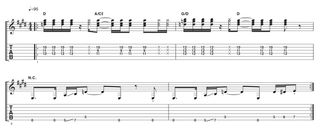
This is a Stone Gossard style rhythm part written to be played over our McCready style example that follows. Bars 1 and 2 feature three-note chords that fill out McCready’s powerchords while keeping the sound of each guitar separate. You can find these shapes by playing only the middle notes of E-, A- and C-shape barre chords.
Exercise 2. Mike'd up
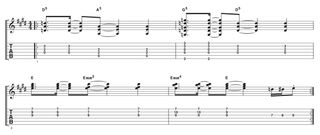
Often, when one Pearl Jam guitarist plays high up the neck, the other holds down classic open position shapes. The sus2 and sus4 chords in bars 3 and 4 are a Pearl Jam trademark. Feel free to loosen up and vary the strumming once you have the basic rhythm down.
Exercise 3. Jamming along
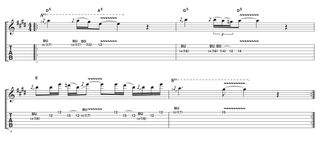
Here’s an example of McCready’s early soloing style, with nods to Hendrix and Stevie Ray Vaughan for phrasing and vibrato. It may take some slow practice to co-ordinate the picking and pull-offs, but the result sounds more human and less mechanical than picking every note. McCready generally boosts a low gain amp with an overdrive pedal for his solo tones.
Get The Pick Newsletter
All the latest guitar news, interviews, lessons, reviews, deals and more, direct to your inbox!

Want to play Master of Puppets the right way? Here's how to get faster at downpicking so you can chug like James Hetfield
![Joe Bonamassa [left] wears a deep blue suit and polka-dotted shirt and plays his green refin Strat; the late Irish blues legend Rory Gallagher [right] screams and inflicts some punishment on his heavily worn number one Stratocaster.](https://cdn.mos.cms.futurecdn.net/cw28h7UBcTVfTLs7p7eiLe-840-80.jpg)
“The intensity of Rory’s guitar playing – the emotion, the sound and his incredible attack – was mindblowing for me”: Joe Bonamassa pays tribute to the late, great Irish blues-rock icon Rory Gallagher







